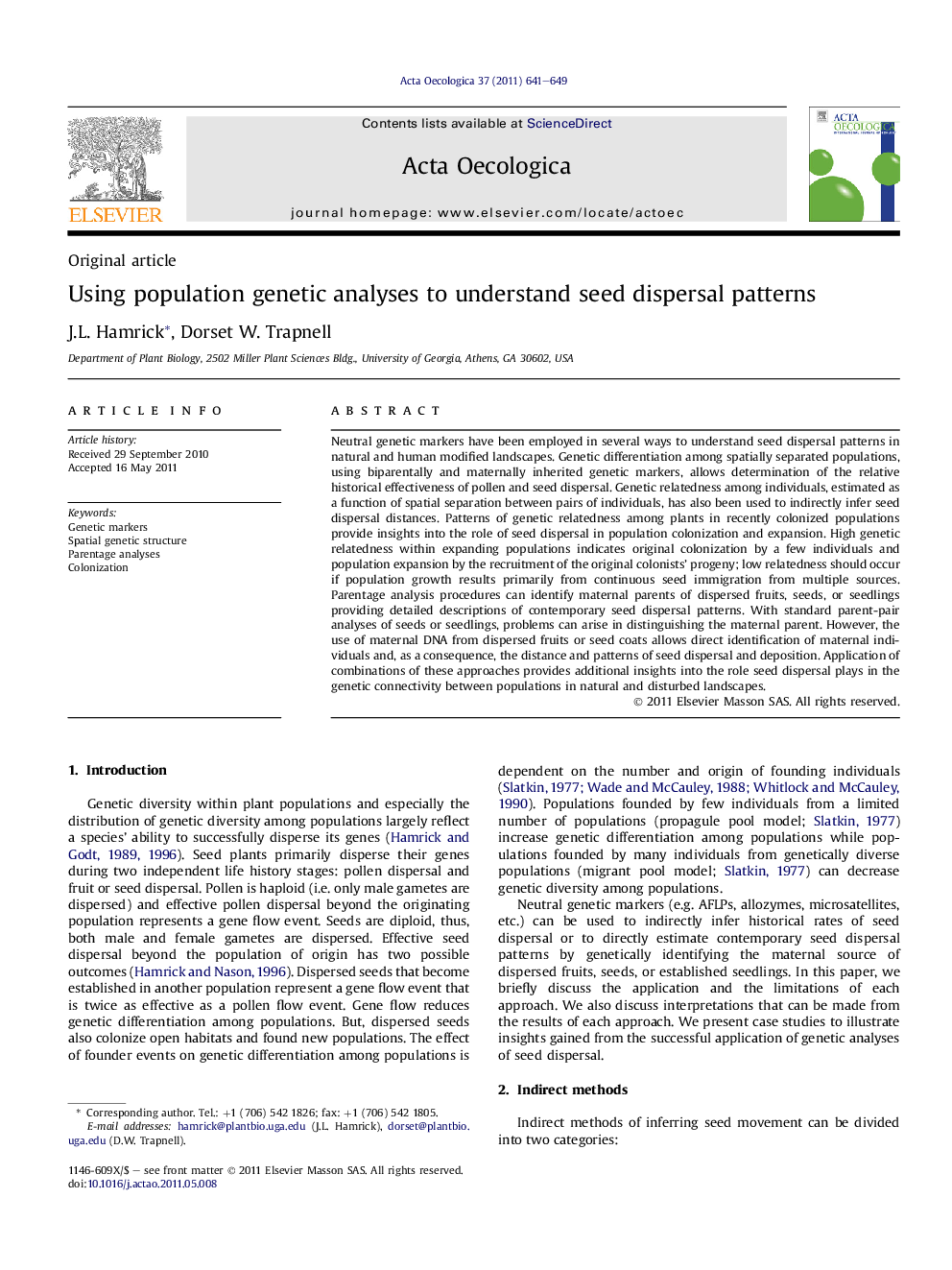| Article ID | Journal | Published Year | Pages | File Type |
|---|---|---|---|---|
| 4381355 | Acta Oecologica | 2011 | 9 Pages |
Neutral genetic markers have been employed in several ways to understand seed dispersal patterns in natural and human modified landscapes. Genetic differentiation among spatially separated populations, using biparentally and maternally inherited genetic markers, allows determination of the relative historical effectiveness of pollen and seed dispersal. Genetic relatedness among individuals, estimated as a function of spatial separation between pairs of individuals, has also been used to indirectly infer seed dispersal distances. Patterns of genetic relatedness among plants in recently colonized populations provide insights into the role of seed dispersal in population colonization and expansion. High genetic relatedness within expanding populations indicates original colonization by a few individuals and population expansion by the recruitment of the original colonists’ progeny; low relatedness should occur if population growth results primarily from continuous seed immigration from multiple sources. Parentage analysis procedures can identify maternal parents of dispersed fruits, seeds, or seedlings providing detailed descriptions of contemporary seed dispersal patterns. With standard parent-pair analyses of seeds or seedlings, problems can arise in distinguishing the maternal parent. However, the use of maternal DNA from dispersed fruits or seed coats allows direct identification of maternal individuals and, as a consequence, the distance and patterns of seed dispersal and deposition. Application of combinations of these approaches provides additional insights into the role seed dispersal plays in the genetic connectivity between populations in natural and disturbed landscapes.
